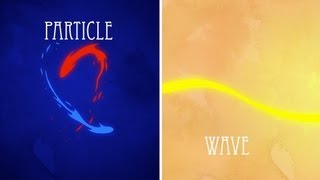(单词翻译:单击)
You look down and see a yellow pencil lying on your desk.
你向下看,发现书桌上有一支黄色的铅笔。
Your eyes, and then your brain, are collecting all sorts of information about the pencil:
然后你的眼睛和大脑开始搜集关于这支铅笔的各种信息:
its size, color, shape, distance, and more.
它的尺寸、颜色、形状、距离等等。
But, how exactly does this happen?
那么,我们是怎么做到的?
The ancient Greeks were the first to think more or less scientifically about what light is and how vision works.
最早是古希腊人从科学角度研究光和视觉的运作机制。
Some Greek philosophers, including Plato and Pythagoras, thought that light originated in our eyes
包括柏拉图和毕达哥拉斯在内的古希腊哲学家们认为,光从我们的眼睛发射出来,
and that vision happened when little, invisible probes were sent to gather information about far-away objects.
其中微小无形的探测器收集到远处物体的信息,从而形成视觉。
It took over a thousand years before the Arab scientist, Alhazen,
从那以后过了一千多年,阿拉伯科学家阿尔哈曾
figured out that the old, Greek theory of light couldn't be right.
才发现古希腊人关于光的理论是错误的。
In Alhazen's picture, your eyes don't send out invisible, intelligence-gathering probes,
阿尔哈曾认为我们的眼睛并不放出无形的信息收集探测器,
they simply collect the light that falls into them.
眼睛只用来收集照射过来的光。
Alhazen's theory accounts for a fact that the Greek's couldn't easily explain: why it gets dark sometimes.
阿尔哈曾的理论能够解释一个古希腊人无法解释的现象,那就是:为什么有时候眼前会一片黑暗。
The idea is that very few objects actually emit their own light.
该理论的核心在于只有少数物体能主动发光。
The special, light-emitting objects, like the sun or a lightbulb, are known as sources of light.
人们把典型的发光物体,如太阳、灯泡,称作光源。
Most of the things we see, like that pencil on your desk,
大部分我们看到的东西,比如那支桌上的铅笔,
are simply reflecting light from a source rather than producing their own.
仅仅反射了来自光源的光,其自身并没有发光。
So, when you look at your pencil, the light that hits your eye actually originated at the sun
因此在你看着铅笔时,眼睛接收到的光实际上来自太阳,
and has traveled millions of miles across empty space before bouncing off the pencil and into your eye,
光线跨越了无际的太空才照射到铅笔,随后反射到你的眼睛里,
which is pretty cool when you think about it.
这么一想一定觉得很酷吧。
But, what exactly is the stuff that is emitted from the sun and how do we see it?
那么太阳发射的光究竟是什么?我们又是如何看到它的?
Is it a particle, like atoms, or is it a wave, like ripples on the surface of a pond?
它是如同原子一样的粒子,还是如同水面涟漪一样的波?
Scientists in the modern era would spend a couple of hundred years figuring out the answer to this question.
现代科学家花了数百年时间才找到答案。
Isaac Newton was one of the earliest.
艾萨克·牛顿是最早发现答案的一位。
Newton believed that light is made up of tiny, atom-like particles, which he called corpuscles.
牛顿认为,光由一种类似原子的微小粒子组成,并称之为“微粒”。

Using this assumption, he was able to explain some properties of light.
基于这一假设,他可以对光的一些属性进行解释。
For example, refraction, which is how a beam of light appears to bend as it passes from air into water.
例如,折射,当一束光从空气射入水中时,它看上去弯曲了。
But, in science, even geniuses sometimes get things wrong.
不过,即便是天才科学家也免不了会犯错。
In the 19th century, long after Newton died,
牛顿死后过了很久,在19世纪时,
scientists did a series of experiments that clearly showed that light can't be made up of tiny, atom-like particles.
科学家做了一系列实验,确切地表明,光不可能是由类似原子的微小粒子组成的。
For one thing, two beams of light that cross paths don't interact with each other at all.
证据在于,当两束光交叉照射时,它们不会相互影响。
If light were made of tiny, solid balls,
如果光的成份是微小的固态粒子,
then you would expect that some of the particles from Beam A would crash into some of the particles from Beam B.
那情况就应该是来自A光束的粒子会撞上来自B光束的粒子。
If that happened, the two particles involved in the collision would bounce off in random directions.
如果真是这样,那相互碰撞的粒子将会弹向四面八方。
But, that doesn't happen.
然而事实并非如此。
The beams of light pass right through each other as you can check for yourself with two laser pointers and some chalk dust.
实际上,光束会穿过彼此,你自己也可以做个实验,用两支激光笔和粉笔灰就行了。
For another thing, light makes interference patterns.
另一个证据就是光有干涉现象。
Interference patterns are the complicated undulations that happen when two wave patterns occupy the same space.
干涉现象是一种复杂的波动现象,当两列波的频率相同时就会发生。
They can be seen when two objects disturb the surface of a still pond,
如果两样物体同时触碰平静的水面,就能看到干涉现象,
and also when two point-like sources of light are placed near each other.
而两个点光源距离很近时也会发生干涉。
Only waves make interference patterns, particles don't.
只有波才有干涉现象,粒子没有。
And, as a bonus, understanding that light acts like a wave leads naturally to an explanation of what color is and why that pencil looks yellow.
发现光有波的属性之后,自然而然地就能解释颜色是什么,以及那支铅笔怎么会是黄色的。
So, it's settled then, light is a wave, right? Not so fast!
所以,这不就解决了,光就是波,对吗?可不能这么快下结论!
In the 20th century, scientists did experiments that appear to show light acting like a particle.
到了20世纪,科学家从实验中发现光有粒子的属性。
For instance, when you shine light on a metal,
比如,当你向一块金属照射光线时,
the light transfers its energy to the atoms in the metal in discrete packets called quanta.
光间断性地以一种称为“量子”的形式,将能量转移到金属原子中。
But, we can't just forget about properties like interference, either.
但我们也不能忘记像干涉这样的属性。
So these quanta of light aren't at all like the tiny, hard spheres Newton imagined.
因此光量子并不全然是牛顿想象地那样微小的固态球体。
This result, that light sometimes behaves like a particle and sometimes behaves like a wave,
光有时呈现粒子性,有时又呈现波的属性,
led to a revolutionary new physics theory called quantum mechanics.
开创了一项革命性的物理理论,称为“量子力学”。
So, after all that, let's go back to the question, "What is light?"
经过以上分析,让我们回到问题本身,“光是什么?”
Well, light isn't really like anything we're used to dealing with in our everyday lives.
光并非我们在日常生活中习以为常的任何东西。
Sometimes it behaves like a particle and other times it behaves like a wave, but it isn't exactly like either.
有时它像粒子,有时又像波,用两者任意一方来定义光都不全面。


